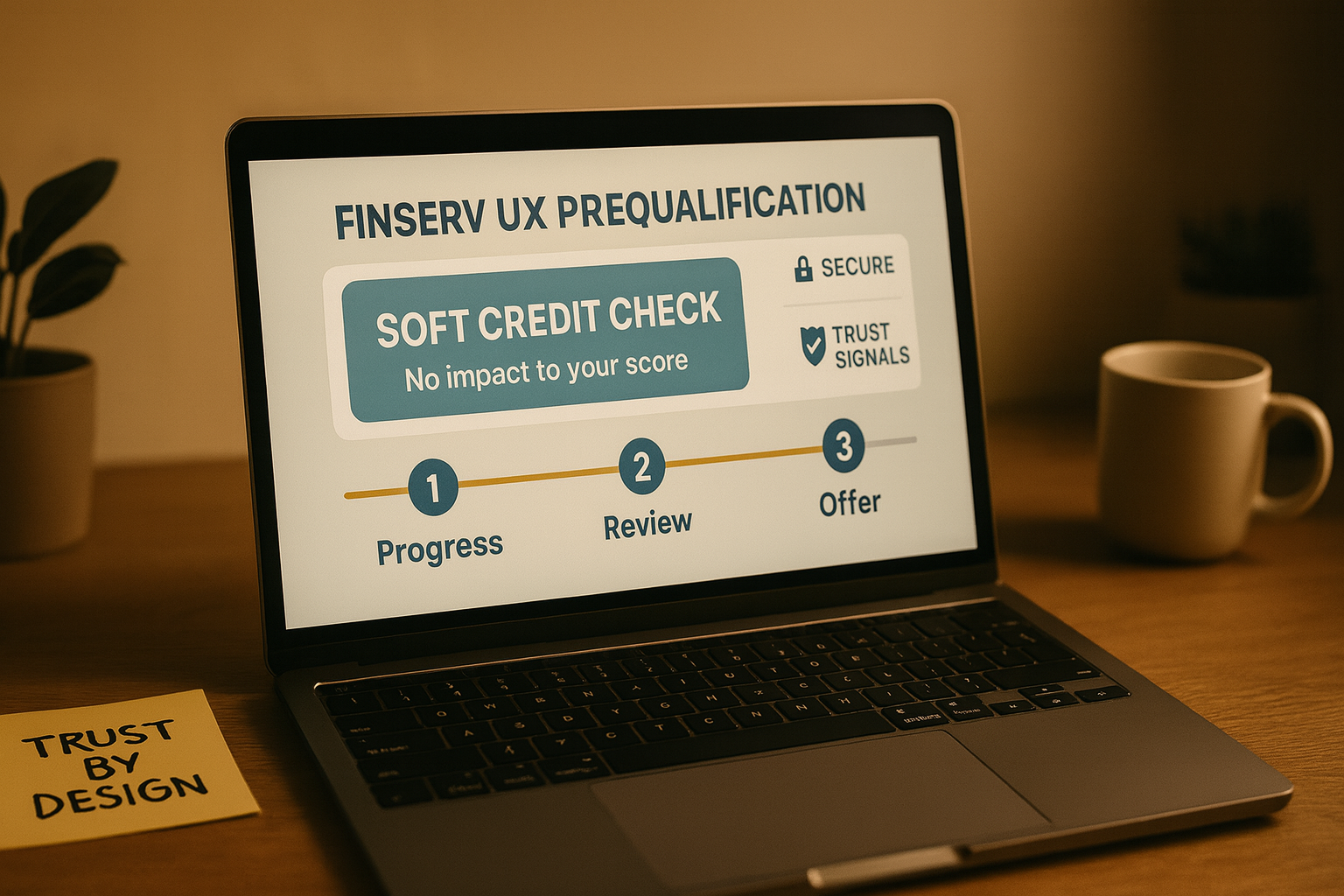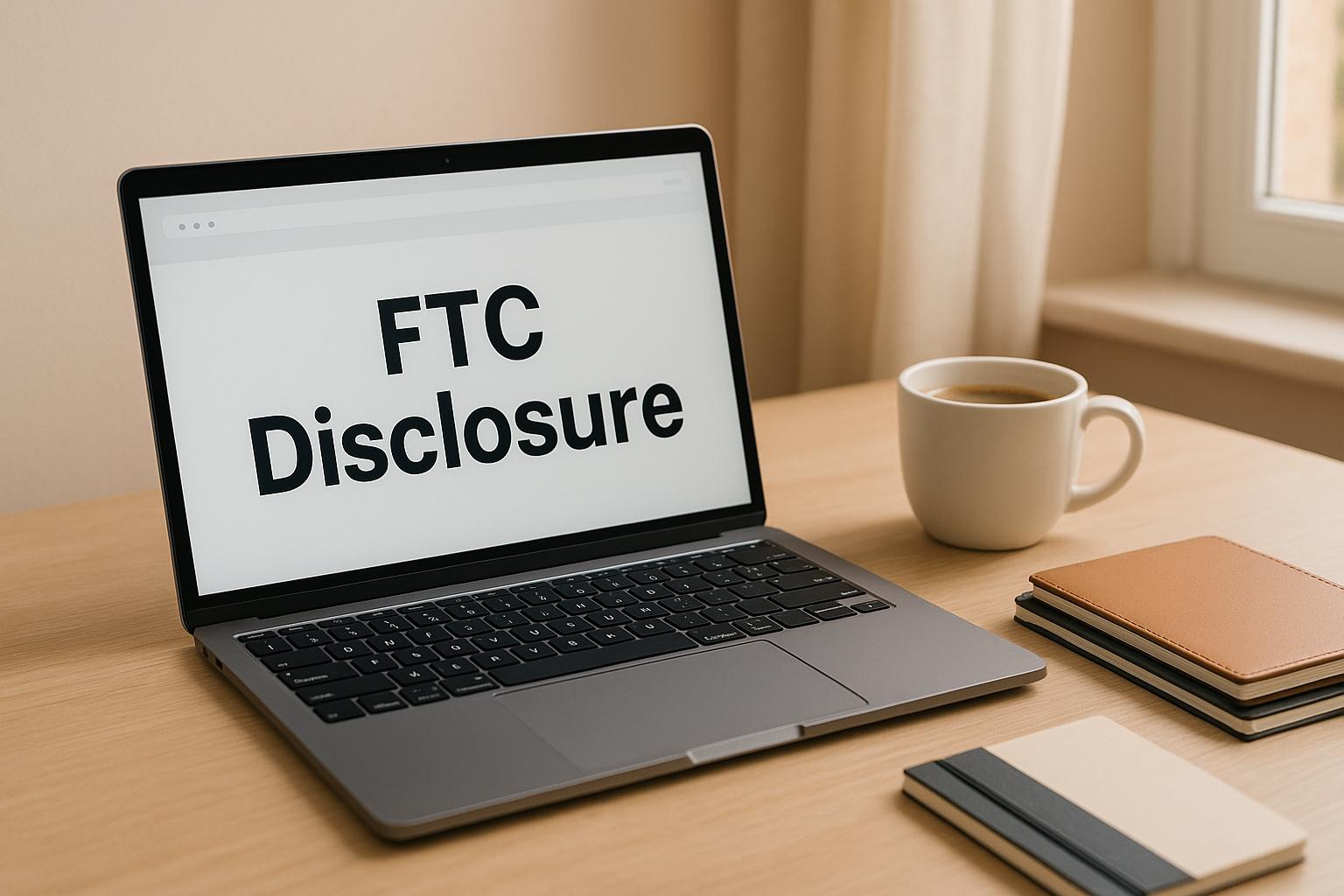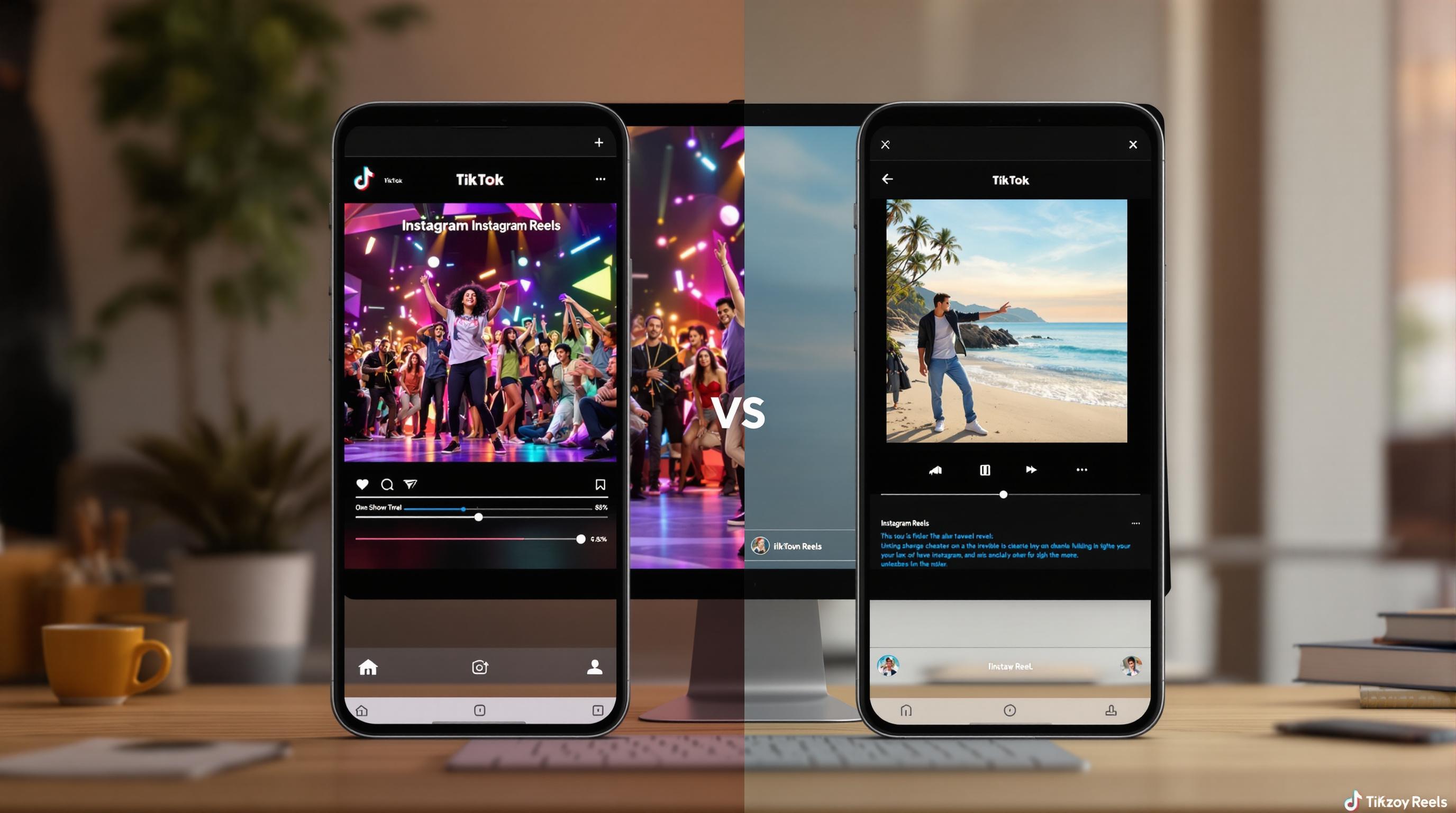
Social proof is one of the most effective ways to build trust and increase conversions online. Why? Because people are naturally influenced by the actions and opinions of others. Whether through customer reviews, case studies, or influencer endorsements, social proof helps reduce doubts and encourages confident decisions.
Key Takeaways:
- 88% of consumers trust online reviews as much as personal recommendations.
- Products with at least five reviews have a 270% higher purchase probability.
- Positive reviews lead to 18% average sales growth, while poor reviews deter 94% of buyers.
- Influencer campaigns can yield up to $5.78 for every $1 spent.
What You’ll Learn:
- How social proof builds trust and boosts conversions.
- The most effective types of social proof: reviews, case studies, and endorsements.
- Where to place social proof for maximum impact (e.g., product pages, landing pages).
- How to measure and improve social proof performance (e.g., A/B testing, analytics).
- Common pitfalls to avoid, like fake reviews or outdated testimonials.
Bottom Line: By strategically using and optimizing social proof, you can not only improve sales but also strengthen your brand’s reputation.
How To Increase Your Conversions with Social Proof Marketing
Main Types of Social Proof and How to Use Them
Picking the right type of social proof can make a huge difference in how your audience perceives your brand. Each kind of social proof serves a distinct purpose and connects with people in different ways. Whether it's customer reviews, case studies, or influencer endorsements, understanding how to use them effectively can significantly boost your conversions.
Customer Reviews and Ratings
Customer reviews are one of the most trusted forms of social proof. In fact, 82% of consumers say positive star ratings and reviews are the most credible endorsements. They help ease any doubts potential buyers might have.
The numbers back this up: products with at least five reviews see a 270% higher chance of being purchased, and 57% of people won't even consider a business with a rating below 4 stars. These stats show just how much reviews can influence trust and buying decisions.
Take Amazon, for example. They prominently display customer reviews and star ratings on every product page. They even include both positive and negative feedback, which builds credibility. Research shows that 68% of consumers trust reviews more when they see both good and bad ratings, while 30% become suspicious if there are no negative reviews at all.
Visual reviews, like photos or videos, are even more impactful, leading to 69% higher conversions compared to text-only reviews. Lululemon uses this approach by letting customers leave detailed feedback, including information on whether products fit true to size.
To make reviews work for you, highlight star ratings and feedback at the top of your product pages, and don’t shy away from showing negative reviews. Transparency matters - 67% of people who read negative reviews are more likely to convert because they value honesty.
Want more reviews? Be proactive. About 80% of reviews come from follow-up emails sent after a purchase. Simplify the process by including direct links to review forms in your emails, and consider offering small perks to encourage participation.
Case Studies and Success Stories
Case studies offer in-depth proof for buyers who need more than just surface-level testimonials. They tell a complete story about how your product or service solved a specific problem and delivered real results.
For example, HubSpot uses detailed case studies to show how their tools have helped businesses achieve measurable success. One case study highlights how BOYD experienced an 82% increase in leads after using HubSpot's marketing software. Such detailed stories give potential customers confidence that they can achieve similar results.
"Companies want to witness a change that feels achievable for them, and not just to hear that an agency did a fantastic job. The stories that resonate most are the ones with concrete data, clear before and after results, and industry relevance, because proof of impact always outperforms generic praise." - Mariana Delgado, Head of Marketing at DesignRush
A great example of this is Antavo’s case study on KFC UK & Ireland’s KFC Rewards Arcade. It breaks down the challenges KFC faced, the loyalty program solution provided, and the specific results achieved, including detailed metrics. The best case studies follow a clear structure: start with a client overview, explain the challenge, describe the solution, share the results, and wrap up with a testimonial or quote.
Timing is key when asking for case study participation. Reach out after a big success or during a smooth onboarding process when customers are happiest with their experience.
While case studies provide detailed narratives, influencer endorsements bring a relatable, personal touch to your brand.
Influencer and Expert Endorsements
Influencer marketing has proven to be highly effective, delivering an average return of $5.78 for every dollar spent. The key is to partner with influencers whose audience aligns with your target market and to build authentic relationships.
A standout example is CeraVe's collaboration with TikTok star Charli D'Amelio in 2024. They hosted an "Acne Academy" event in New York City with over 350 influencers from 25 countries, collectively reaching an audience of 1.5 billion followers. Instead of just promoting products, they provided educational content, making the endorsements feel genuine.
Expert endorsements also carry weight, especially in specialized fields. CeraVe incorporates dermatologist testimonials across their website, while Aviation Gin has successfully built its brand around actor Ryan Reynolds’ celebrity endorsement.
Authenticity is everything. User-generated content is often seen as more trustworthy than branded content, which can come off as overly promotional. GoPro nails this approach by showcasing customer-created videos. Their top three YouTube videos, all filmed by users, have racked up over 400 million views as of March 2024.
On platforms like Instagram and TikTok, where visuals dominate, influencer partnerships thrive. The trick is ensuring that the content fits naturally with the influencer’s usual style instead of looking like an ad. Transparency is also critical - always disclose partnerships clearly to maintain trust and meet regulatory requirements. When done right, authentic endorsements can be a game-changer for your brand.
How to Add Social Proof to Conversion Pages
Trust is a cornerstone of any successful online business, and social proof can play a key role in boosting conversion rates. In fact, research shows that adding social proof can increase sales by 10–15%. However, the key lies in placing these elements strategically throughout your conversion funnel.
Where to Place Social Proof Elements
The placement of social proof elements can make or break their effectiveness. Different parts of your website require unique approaches to maximize their impact.
On product pages, position customer reviews and ratings prominently near the product title and price. This ensures visitors see them immediately, helping them make quicker purchasing decisions. For example, placing detailed testimonials near call-to-action buttons can nudge hesitant buyers, especially when purchase intent is high. Studies suggest that optimizing this placement for mobile users can increase conversions by up to 25%.
Landing pages thrive on testimonials that appear above the fold, especially those addressing common objections. Case studies can be more effective in the middle of the page, offering in-depth proof for visitors who need additional reassurance. Expert endorsements should be placed near your value proposition to establish credibility right away.
During the checkout process, keep social proof elements minimal but impactful. Display security badges and recent purchase notifications to reassure users as they enter payment details. Overloading this stage with too much information can distract from the final step.
For email campaigns, social proof works best in the header or right after your main message. Including star ratings in subject lines can boost open rates, while product recommendation emails often perform better when they show how many others have purchased the same items.
Regional relevance is another important factor. Highlight reviews or live sales from the same region as your audience. For instance, a customer in Texas is more likely to trust testimonials from other Texas-based buyers than generic ones from different countries.
Next, let’s look at how to tailor social proof for mobile and desktop platforms.
Making Social Proof Work on Mobile and Desktop
Mobile and desktop users interact with social proof differently, so it’s important to adapt your approach for each platform.
On mobile devices, simplicity is key. Focus on concise testimonials and star ratings rather than lengthy case studies. Since mobile users tend to scroll quickly, place your most compelling social proof within the first two screen lengths. Touch-friendly carousels are also a great way to let users swipe through testimonials without overwhelming the screen.
For desktop layouts, you can include more detailed elements like sidebar testimonials, expanded case studies, and comparison charts featuring customer feedback. Hover effects work well here, allowing users to explore additional details without cluttering the page.
Consistency across devices is crucial. If a visitor starts browsing on mobile and later switches to desktop, they should encounter complementary social proof elements that reinforce their trust in your brand. Additionally, page speed plays a significant role. Optimize images and review widgets to ensure fast loading times, as even the most compelling social proof won’t work if your page takes too long to load.
Now, let’s dive into how real-time notifications can further enhance credibility.
Using Real-Time Notifications
Real-time notifications are a powerful way to showcase active customer engagement and create a sense of urgency. These notifications tap into psychological triggers like the fear of missing out (FOMO) and the bandwagon effect.
When visitors see updates like "Sarah from California just purchased this item 3 minutes ago", it provides immediate validation for their own decision-making process. This type of social proof reinforces the trust built through reviews and testimonials.
To make these notifications effective, timing and placement are key. Display notifications for 5–7 seconds with a 15–30-second delay between appearances. Position them at the bottom left or right corner of the screen, where they’re noticeable but not intrusive. On mobile, limit the width of notifications to 70% of the screen to keep them readable without dominating the user’s view.
Here’s a quick guide to optimize real-time notifications:
| Element | Recommended Setting | Why It Works |
|---|---|---|
| Timing | Display: 5–7 seconds; Delay: 15–30 seconds | Keeps notifications visible without annoyance |
| Position | Bottom left/right | Less distracting than center placement |
| Mobile Display | 70% max width | Ensures readability without overwhelming |
To avoid overwhelming visitors, limit notifications to 2–3 per page and 5–7 per session. Overuse can make your site feel spammy and erode trust instead of building it. Also, aim to show notifications during peak hours when genuine activity levels are higher.
Authenticity is critical. Use platforms that verify reviewer identities and purchase histories to ensure your notifications reflect real customer actions. Misleading or fake notifications can harm your credibility and may even violate consumer protection laws.
Finally, customize notifications to match your brand’s design. Generic popups can look spammy, but branded notifications - using your color scheme, fonts, and tone - feel like a natural part of your site. This consistency helps reinforce trust across all customer touchpoints.
sbb-itb-3858882
How to Measure and Improve Social Proof Results
Adding social proof to your marketing strategy is just the beginning. To make it truly effective, you need to monitor its performance and fine-tune it regularly. By focusing on key metrics, you can ensure your social proof efforts are driving conversions and building trust.
KPIs for Measuring Social Proof Success
Tracking the right metrics will reveal whether your social proof strategy is hitting the mark or needs adjustment. Here are some key indicators to watch:
- Conversion rate: Keep an eye on how your conversion rates change after implementing social proof. Look at both overall site conversions and specific page performance to identify what works best in different scenarios.
- Bounce rate: If bounce rates drop after adding testimonials or reviews, it’s a good sign that visitors find your content more credible and engaging.
- Time on page: When users spend more time reading reviews, case studies, or testimonials, it shows they’re building trust in your brand - especially important on product and landing pages.
- Click-through rates (CTR): Measure how call-to-action buttons near social proof elements perform. This will help you gauge their direct impact on user behavior.
- Customer acquisition cost (CAC): Better conversion rates mean you’re converting more visitors without increasing traffic, which can lower your CAC.
- Revenue per visitor (RPV): This metric ties conversion improvements to changes in the average order value, showing the overall impact of your social proof efforts.
Use tools like Google Analytics, your e-commerce platform’s analytics, or specialized conversion tools to track these metrics. You can also set up custom events to monitor interactions with specific elements, like review carousels or testimonial sections, for deeper insights.
A/B Testing Social Proof Elements
A/B testing is a powerful way to figure out which social proof elements resonate most with your audience. Begin by testing the basic impact of adding social proof. Create two versions of a key page - one with social proof and one without - and run the test until you reach statistically significant results.
Once you've confirmed social proof is effective, dive deeper by testing different types. For instance, compare customer reviews to expert endorsements or testimonials to case studies. True Botanicals saw a 4.9% increase in site-wide conversions by adding social proof to their product pages.
You can also experiment with the amount of social proof. Some pages might perform better with just a few reviews, while others may benefit from a single, standout testimonial. Placement matters too - try positioning testimonials above the fold, below product descriptions, or in sidebars. Since mobile and desktop users may respond differently, it’s worth running separate tests for each device type.
Format variations can also make a difference. Test star ratings against written reviews, video testimonials against text-based ones, or detailed case studies against shorter success stories. Social proof can take many forms, from customer reviews and expert endorsements to awards, media mentions, and certifications.
Keep detailed notes on your test results - not just which version performed better, but by how much and for which audience segments. This data will guide future improvements.
Making Changes Based on Analytics
Data is only useful if you act on it. Use your findings to refine your social proof strategy and keep it driving results.
- Spot trends: If customer reviews consistently outperform expert endorsements, focus on collecting and showcasing more customer feedback. Look for patterns across different page types, traffic sources, and audience segments.
- Segment your analysis: Different groups respond differently. New visitors might trust expert endorsements more, while returning customers may prefer authentic customer reviews. Mobile users may favor concise testimonials, while desktop users might engage more with detailed case studies.
- Replace underperforming elements: Swap out testimonials or reviews that aren’t engaging your audience for stronger alternatives. Remove anything that doesn’t contribute to conversions.
- Keep content fresh: Stale reviews or outdated testimonials can hurt credibility. Review and update your social proof regularly - quarterly updates are a good rule of thumb.
- Scale what works: If a specific type of social proof performs well on product pages, test it on other pages like landing pages or during checkout. Always validate changes through testing to avoid one-size-fits-all assumptions.
- Build a feedback loop: Use performance data to guide what types of customer stories to collect, what questions to ask in testimonials, and how to best present them.
- Set up alerts: Real-time monitoring of key metrics can help you quickly address any unexpected drops in performance, rather than waiting for routine reports.
Social proof isn’t a set-it-and-forget-it strategy. As consumer preferences shift and new formats emerge, continuous testing and optimization are essential to keep your efforts effective and relevant. Regular refinement ensures you’re always leveraging social proof to its full potential.
Common Social Proof Problems and Solutions
Building on strategies for measurement and optimization, this section dives into common challenges and practical fixes for using social proof effectively. Even the most well-thought-out strategies can backfire if not implemented carefully. By understanding potential pitfalls and addressing them head-on, you can maintain your credibility and boost conversions.
Avoiding Fake Reviews and Testimonials
The idea of padding your reputation with fake reviews might seem tempting, but it’s a risky move that can damage trust, distort fair competition, and lead to hefty penalties. For example, about 40% of Amazon reviews are fake, and over 60% of product reviews show signs of deception.
The consequences can be severe. Businesses face fines of up to $51,744 per violation for fake reviews, and nearly all consumers - 97%, to be exact - lose trust in a brand if they uncover fake reviews. Amazon has permanently banned thousands of sellers for manipulating ratings, and in one U.S. case, a company selling weight-loss supplements was fined $12.8 million for fabricating customer feedback.
"Fake reviews not only waste people's time and money but also pollute the marketplace and divert business away from honest competitors."
- FTC Chair Lina M. Khan
To avoid these issues, focus on real feedback. Make it simple for genuine customers to leave reviews - ask them directly after a purchase or service and let them know how much their honest opinions matter. Use tools to monitor for suspicious activity and address any issues immediately.
If negative reviews come up, don’t shy away. Respond professionally, showing that you value feedback and are committed to improvement. Transparency is also key - clearly disclose any relationships with reviewers to avoid legal trouble.
Real reviews stand out because they include specific details, like product flaws, packaging, or personal experiences. In contrast, fake reviews often use generic language and lack specifics. Look for reviewers with authentic profiles and a history of varied reviews to ensure credibility.
Keeping Content Current and Relevant
Outdated social proof can work against you. Old awards, testimonials mentioning discontinued features, or reviews referencing outdated pricing can make your business seem disconnected.
Keeping your social proof up-to-date shows that you’re engaged and consistently delivering value. Refresh testimonials, certifications, and other proof points regularly - every few months is a good rule of thumb.
Seasonal relevance is also important. A glowing testimonial about your winter product line might not resonate during the summer. Rotate your social proof to align with current campaigns, seasonal offerings, or trending topics in your industry.
It’s also a good idea to monitor the performance of your social proof. If certain testimonials or case studies aren’t driving engagement, replace them with fresh, relevant examples.
Choosing the Right Social Proof Types
Not all social proof works equally well for every audience. Aligning your approach with what your customers care about most can build trust and drive conversions. Social proof should be credible, relevant, emotionally engaging, visual, and tailored to your audience.
| Type of Social Proof | Pros | Cons |
|---|---|---|
| Customer Reviews | Builds trust and is easy to collect; 88% of consumers trust them as much as personal recommendations | Can be faked or manipulated; requires ongoing management |
| Case Studies | Offers detailed, persuasive insights with concrete results; tells a complete problem–solution story | Time-intensive to create; may not appeal to all audience segments |
| Influencer Endorsements | Boosts visibility and credibility; 71% of consumers trust industry authorities | Can be expensive; requires careful selection to avoid seeming inauthentic |
To make the most of social proof, address your customers’ specific concerns. For example, if they’re worried about product quality, focus on customer reviews. If they’re unsure about implementation complexity, use detailed case studies to show successful outcomes.
Different audiences and channels respond to different types of social proof. Tailor your content to each major audience segment instead of relying on a one-size-fits-all approach. Build authentic connections between your testimonial providers and your audience rather than just matching demographics.
For B2B audiences, case studies often outperform basic testimonials by offering the detailed analysis that decision-makers need. Meanwhile, 79% of consumers watch video testimonials to learn more about products.
Finally, match your social proof to your customers’ biggest concerns. If security is a priority, highlight trust badges and certifications. If effectiveness is the issue, showcase detailed case studies with measurable results.
Conclusion: Using Social Proof for Better Conversions
Building on the strategies discussed earlier, social proof can be a game-changer when it comes to boosting conversions. By establishing trust and encouraging confident purchasing decisions, it becomes one of the most effective tools in your marketing arsenal.
Key Takeaways
Social proof isn’t just a nice addition - it delivers results. For example, websites featuring customer reviews see a 67% higher conversion rate than those without them. Plus, 95% of shoppers read reviews before making a purchase. These statistics highlight how crucial it is to incorporate social proof into your strategy.
But it’s not just about having reviews; authenticity is key. Customers can spot fake or overly polished feedback, so focus on collecting and showcasing genuine testimonials from real users. Honest experiences help build trust and credibility that lasts.
Where you place social proof can be just as important as the content itself. A glowing testimonial won’t make an impact if it’s tucked away in a hard-to-find spot. Place reviews, badges, or endorsements near calls to action, checkout pages, and lead forms - where they can directly influence decisions.
Different types of social proof work better for different audiences. For instance, B2B clients might prefer detailed case studies, while consumer audiences may respond more to user-generated content or influencer recommendations.
"Social proof is the backbone of any sales funnel and marketing strategy. It eases buyers into exploring your brand, helps alleviate any initial resistance, and builds community-led trust." - Single Grain
Lastly, remember that what works today might not work tomorrow. Regularly test and optimize your approach. A/B testing different formats, placements, and messages can provide valuable insights to keep your strategy effective.
Next Steps for Implementation
To make the most of social proof, start with these actionable steps:
- Audit your current efforts: Review your website, landing pages, and marketing materials to identify where social proof is already being used and where it’s missing - especially on high-traffic pages or key conversion points.
- Quick improvements: If you don’t have customer reviews on product pages, adding them could boost conversions by up to 270%. Trust badges, client logos, and dedicated testimonial sections are other quick wins to consider.
- Streamline feedback collection: Make it easy for customers to leave reviews after purchases. Use tools like dedicated hashtags or simple calls to action to encourage sharing on social media.
- Test and refine: Experiment with different types of testimonials, placements, and formats. Start small - adjust one element at a time to see what drives the biggest impact.
Social proof isn’t limited to your website. Infuse it throughout the customer journey - use it in email campaigns, social media posts, sales presentations, and even customer service interactions. For example, ConvertKit highlights customer profiles on its homepage, while Slack uses client logos to establish credibility.
Tailor your social proof to address specific customer concerns. If security is a concern, emphasize trust badges and certifications. If potential buyers doubt your product’s effectiveness, lead with case studies or measurable results.
Keep gathering feedback, testing new ideas, and updating your approach. With 92% of consumers reading online reviews before making a purchase, there’s no better time to make social proof a central part of your conversion strategy.
FAQs
What are the best ways to collect and showcase customer reviews to boost conversions?
To make customer reviews work harder for your conversions, start by simplifying the feedback process. Use tools like follow-up emails, in-app prompts, or post-purchase surveys to encourage customers to share their thoughts. The key is to keep the process quick and hassle-free.
When it comes to featuring reviews, focus on genuine and detailed testimonials that address common questions or highlight specific product benefits. Place these reviews strategically on high-traffic pages like the homepage, product pages, and even the checkout page. Adding visual elements - such as star ratings, customer photos, or video testimonials - can boost credibility and make the reviews more engaging.
To build trust, include details like the reviewer’s name, location, or a "verified purchase" badge. You can also organize reviews by themes (like quality, value, or customer service) or showcase recent ones on rotation. This makes it easier for potential buyers to find the information that matters most to them.
How can I choose the right type of social proof to engage my audience and boost conversions?
When deciding on the most effective type of social proof, think about what matters to your audience and the specific demands of your industry. For B2B companies, case studies and testimonials supported by data tend to strike the right chord. On the other hand, user-generated content and social media shoutouts are often more impactful for brands targeting everyday consumers.
To maintain credibility, focus on sharing authentic feedback and position your social proof strategically - like on product pages or during checkout. Interacting with reviews and showcasing real customer stories can also help establish trust and drive more conversions.
How can I make sure my social proof is authentic and avoid fake reviews?
To make your social proof credible, prioritize gathering verified reviews from actual customers. Prompt users to share their honest experiences after a purchase or service, and rely on well-known third-party platforms to ensure their legitimacy.
Focus on reviews that are detailed and specific, as they tend to resonate more with potential customers. Stay active by regularly monitoring and responding to reviews - this not only demonstrates your commitment to transparency but also helps deter fake submissions. Genuine feedback fosters trust, strengthening your brand's reputation against the influence of fraudulent reviews.


















































![Top 7 Best Instagram Growth Services in 2025 [RESULTS]](/cdn-cgi/image/fit=contain,format=auto,width=null/https://cdn.prod.website-files.com/67840d1d88a886f29a66a4c1/6795d12917ee4501b9eddf73_6795c731964f791db3b566c4-1737870861582.jpg)


![UpGrow Review – The Best Instagram Growth Service in 2025 [TESTED]](/cdn-cgi/image/fit=contain,format=auto,width=null/https://cdn.prod.website-files.com/67840d1d88a886f29a66a4c1/6795040db42e404207732526_6794fd9c964f791db3b48de9-1737818779111.jpg)


